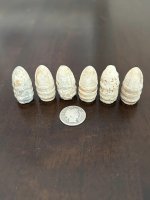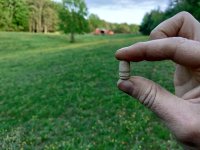Frankn
Gold Member
I was hoping someone else has more info and maybe wants to partner on this one.
Dr. Docker buried thousands in gold coin at his farm in Commerce Maryland during the Civil War.He feared his home would be ramsacked by both sides. The doctor died without telling anyone where he had buried the cache. Frank
Dr. Docker buried thousands in gold coin at his farm in Commerce Maryland during the Civil War.He feared his home would be ramsacked by both sides. The doctor died without telling anyone where he had buried the cache. Frank







